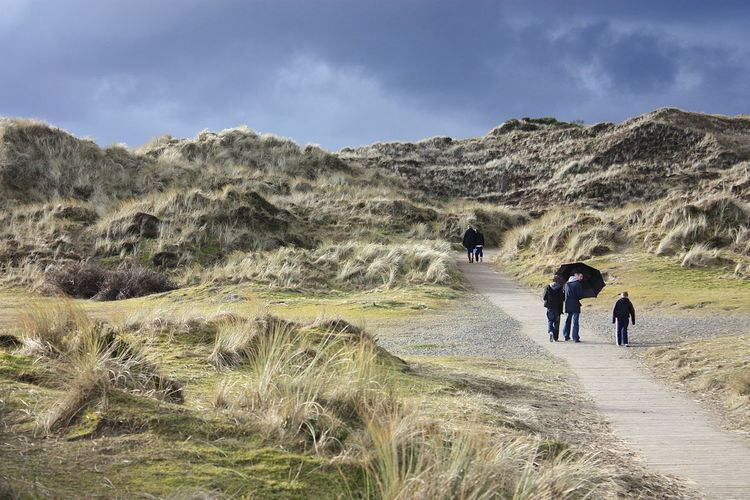Area 2.821 km² Phone +44 28 4375 1467 | Governing body National Trust Province Ulster Established 1967 | |
 | ||
Address Keel Point, Dundrum BT33 0NQ, UK Hours Open today · 10AM–6PMWednesday10AM–6PMThursday10AM–6PMFriday10AM–6PMSaturday10AM–6PMSunday10AM–6PMMonday10AM–6PMTuesday10AM–6PMSuggest an edit Management National Trust for Places of Historic Interest or Natural Beauty Similar Tolly Forest Park, Murlough Cottage Caravan, Mournevi Caravan Park, Castlewel Forest Park, Bonnys Caravan Park Profiles | ||
Murlough nature reserve and beach
Murlough Nature Reserve lies on the coast of County Down in Northern Ireland, situated close to Newcastle. It offers spectacular views of Slieve Donard, the highest peak in the Mourne Mountains and Dundrum Bay. Its 6,000-year-old sand dune system has been managed by the National Trust since 1967, when it became Ireland's first nature reserve. Grid ref: J414351.
Contents
- Murlough nature reserve and beach
- The mournes murlough nature reserve august 2015
- FeaturesEdit
- HistoryEdit
- Moths and butterfliesEdit
- References
The mournes murlough nature reserve august 2015
FeaturesEdit
At 697 acres, it is the best and most extensive example of dune heath within Ireland, with a network of paths and boardwalks through the dunes. Breeding birds include meadow pipit, skylark, cuckoo, stonechat, linnet and reed bunting. Shorehauling grey seal and common seals are also common in the area. Between 50 and 130 common and grey seals regularly use the area for moulting, resting and feeding. Rare plants local to the site are pyramidal orchid and carline thistle.
It also has access to one of the finest beaches in County Down.
Murlough makes up one fifth of all dune heathland in the British Isles, but remains under threat from the encroachment of scrub vegetation such as bracken and gorse and non-native species such as Sea Buckthorn. In 1999 the National Trust established the South Down Heathland project, a five-year programme to protect the habitat. It has been designated an Area of Special Scientific Interest and a Special Area of Conservation.
HistoryEdit
The area has evidence of human habitation from Neolithic times, through the Bronze Age to the present day. In the 12th century a rabbit warren was established on the site by the Normans for their meat and pelts. This had a major influence on the development of the heath and grassland found today. A particularly stormy period in the 13th and 14th centuries resulted in a huge movement of sand which led to the unusually high dunes also found today.
Moths and butterfliesEdit
Several rare and beautiful moths and butterflies can be found within the reserve. Of the 23 butterfly species recorded at Murlough, the marsh fritillary (Euphydryas aurinia), is of European importance - other notable species include dark-green fritillary (Argynnis aglaja), grayling (Hipparchia semele) and cryptic wood white (Leptidea juvernica). One species, the wall brown butterfly (Lasiommata megera) has not been recorded for several years and is considered extinct at this site. Over 660 species of moth have been recorded within the boundary of Murlough Nature Reserve, more than at any other site in Northern Ireland - notable examples include small elephant hawkmoth (Deilephila porcellus), sand dart (Agrotis ripae) and the micro moths Pyrausta cingulata and Hysterophora maculosana. The total number of Lepidoptera (butterflies and moths) recorded within the nature reserve boundary is 685 (348 macro moths, 314 micro moths and 23 butterflies).
Situated in the south-east of County Down Murlough is well-placed to receive migrant species and recent notable examples have included:
In 2012 a Stephens' gem (Megalographa biloba) was recorded at Murlough NNR - this was the 1st record for Ireland of this North American moth species.
